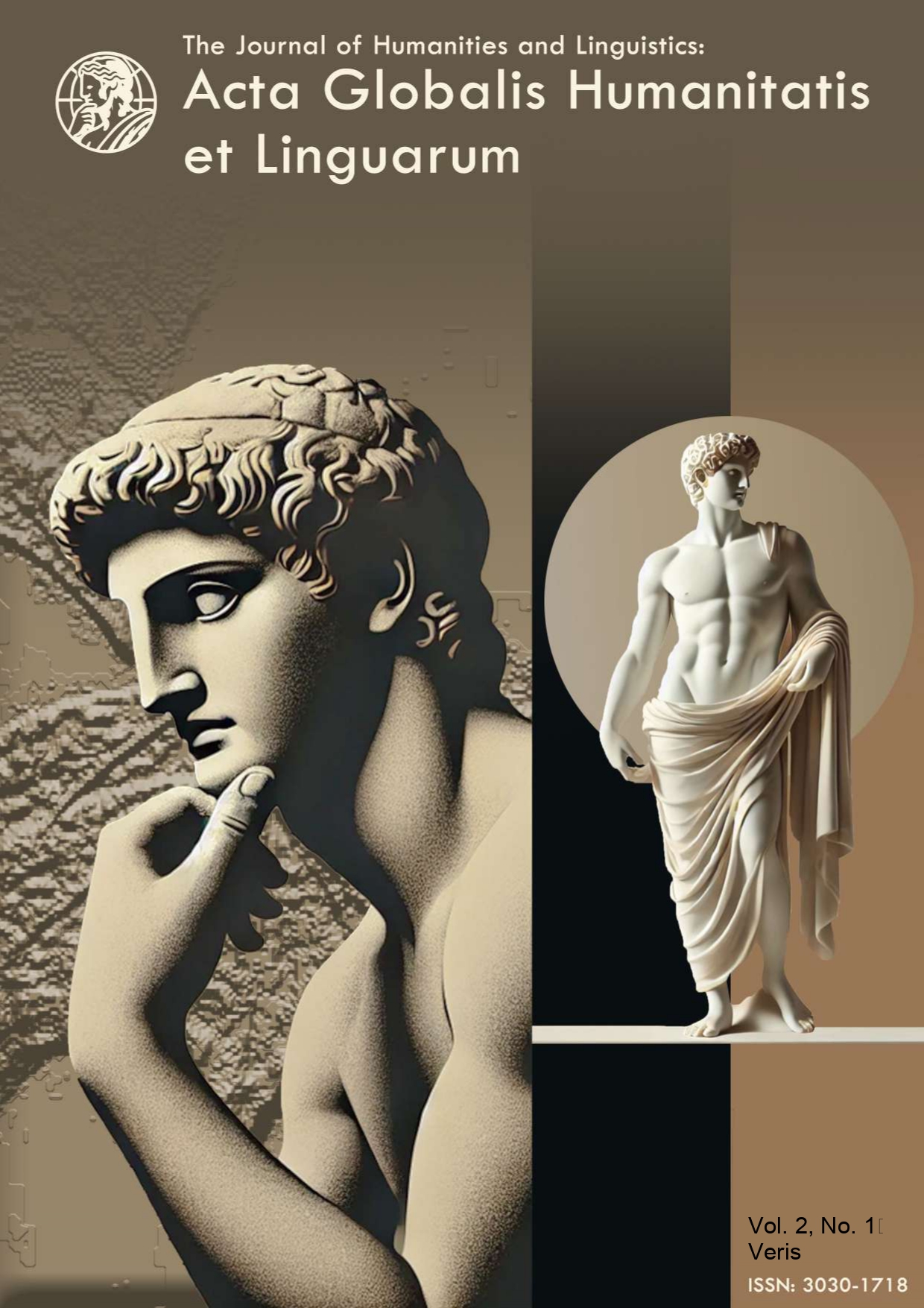The Impact of Artificial Intelligence on the International Human Rights System
DOI:
https://doi.org/10.69760/aghel.02500206Keywords:
Artificial İntelligence, Human Rights, New Technologies, Fourth Generation Human RightsAbstract
The right to benefit from scientific advances, including new technologies, has always been a fundamental human right. One of these new technologies is artificial intelligence technology. Artificial intelligence is a type of intelligence that emerged in the 1950s and is an inseparable part of the digital revolution.
The development of artificial intelligence and its application in many areas of human life, especially in the field of human rights, has transformed the way people live. In previous research, the impact of the use of artificial intelligence on the international human rights system has been examined using an analytical-descriptive research method and using library tools.
The results of the present study indicate that the use of artificial intelligence in various instances of rights recognized in multiple generations of human rights (first, second, and third generation) has positive and negative effects and has the potential to be considered as one of the instances of the fourth generation of human rights (the doctrine of technology) and also in order to remove issues and possible negative effects of legal measures at the national and international levels with the aim of rule-making and strengthening the processes of A partnership has been formed.
References
Babazadeh Moghadam, Hamed (2020). An Introduction to the Fourth Generation of Human Rights; Supporting Human Dignity in the Age of Communications. Publisher. News Sciences, 195-212. Tehran, Iran. For Access: https://tinyurl.com/348usfd6
Bhardwaj, G., Singh, S. V., & Kumar, V. (2020). An empirical study of artificial intelligence and its impact on human resource functions. In 2020 International Conference on Computation, Automation and Knowledge Management (ICCAKM) (pp. 47-51). IEEE.
Brennan, D., Fry, W., & O'Flynn, C (2018). Artificial intelligence in the workplace (part 3): ai and gender equality .ttps://www.williamfry.com/newsandinsights/news-article/2018/08/01/artificial-intelligence-in-the- workplace-(part-3)-ai-and-genderequality
Budek, K. (2019). How artificial intelligence can fight hate speech in social media. https://deepsense.ai/artificial- intelligence-hate-speech/
Cassauwers, T. (2019). Can artificial intelligence help end fake news. Horizon: The EU Research & Innovation Magazine .https://ec.europa.eu/research-and-innovation/en/horizon-magazine/can-artificial-intelligence- help-end-fake-news
Dogan, M. E., Goru Dogan, T., & Bozkurt, A. (2023). The use of artificial intelligence (AI) in online learning and distance education processes: A systematic review of empirical studies. Applied Sciences , 13 (5), 3056.
Ekram Yawar, M., & Amani, A. (2025). Features of international trade contract. Acta Globalis Humanitatis Et Linguarum, 2(1), 276-296. https://doi.org/10.69760/aghel.02500137
Ekram Yawar, M., & Qurban Hakimi, M. (2025). Analysis and review of research in the field of medical ethics in the international arena. Global Spectrum of Research and Humanities , 2(2), 3-17. https://doi.org/10.69760/gsrh.01012025009
Ekram Yawar, M., & Qurban Hakimi, M. (2025). Professional Ethics in Health Management Lays the Foundation for Respecting Patient Rights. EuroGlobal Journal of Linguistics and Language Education, 2(1), 89-95. https://doi.org/10.69760/egjlle.2500010
Ekram Yawar, M., & Jamil Sharıfy , A. (2025). Exploring Rational Reflections in Artificial Intelligence. EuroGlobal Journal of Linguistics and Language Education, 2(2), 4-31. https://doi.org/10.69760/egjlle.2500011
Ekram Yawar, M., & Qurban Hakimi, M. (2025). The Impact of Artificial Intelligence Technology on Human Resources Performance in Organizations . EuroGlobal Journal of Linguistics and Language Education, 2(1), 96-108. https://doi.org/10.69760/egjlle.2500013
Fidh & Ict. (2016). China ' s new counter-terrorism law: implications and dangers for tibetans and uyghurs:a joint report by the international campaign for tibet and fidh https://www.savetibet.org/wp-content/uploads/2016/11/fidh-ict-chinas-new-counter-terrorism-law- implications-and-dangers-for-tibetans-and-uyghurs-15-11-2016 final.pdf
Germain, J. (2023). The First' A.I. Lawyer' Will Help Defendants Fight Speeding Tickets. https://www.smithsonianmag.com/smart-news/the-first-ai-lawyer-will-help-defendants-fight-speeding- tickets-180981508/
Ghebrehewet, S., Stewart, G., Baxter, D,. Shears, P., Conrad, D., & Kliner, M. (2016). Health protection: principles and practice . Oxford university . https://www.drcath.net/snapfacts/health-protection
Herweijer, C. (2018). Harnessing artificial intelligence for the earth, fourth industrial revolution for the earth series . World economic forum , P. 9-11 https://www3.weforum.org/docs/harnessing_artificial_intelligence_for_the_earth_repot_2018.pdf
Luger, G., & Stubblefield, W. (1993). Artificial Intelligence: Structures and Strategies for Complex Problem Solving . University of New Mexico. P . 1. http://www.uoitc.edu.iq/images/documents/informatics- institute/exam_materials/artificial%20intelligence%20structures%20and%20strategies%20for%20%20com plex%20problem%20solving. pdf
Moon, M. (2023). Jail threats stop AI 'robot lawyer' from making its debut in court. https://www.engadget.com/jail- threats-ai-robot-lawyer-court-case-063006308.html?guccounter=1
Mostafavi Ardebili, Seyed Mohammad Mehdi, Taghizadeh Ansari, Mustafa and Rahmatifar, Samaneh (2012). Functions and Requirements of Artificial Intelligence from the Perspective of Fair Trial. Publisher. Law of New Technologies, Volume 3, Number 6. Pages 47-60. For access: https://mtlj.usc.ac.ir/article_160785.html
Murdoch, B. (2021). Privacy and artificial intelligence: challenges for protecting health information in a new era. BMC Medical Ethics , 22 (1), 1-5. https://bmcmedethics.biomedcentral.com/counter/pdf/10.1186/s12910-021- 00687-3. pdf
Reid, I. (2019). The generations of human rights . University of alabama at birmangham. https://sites.uab.edu/humanrights/2019/01/14/the-generations-of-human-rights/
Risse, M. (2021). The fourth generation of human rights: Epistemic rights in digital lifeworlds. Moral Philosophy and Politics , 8 (2), 351-378.
Roan, M., Young, L., Rudeliu, K., & Weissbrodt, D. (2023). Study guide:freedom of religion or belief. University of minnesota human rights center. http://hrlibrary.umn.edu/edumat/studyguides/religion.html
Salehi, Hamid (2015). The concept of peace in Western international relations theories and Iranian-Islamic peace studies. Publisher: International Relations Research, No. 1 (15th issue), 101-134. For access: https://tinyurl.com/2txfb99w
Saybani, Alireza and Shahbazi, Alidad (2017). Protection of Environmental Rights from the Perspective of International Human Rights. Publisher: Nations Research Monthly, (16),91-96. Tehran, Iran. For access: https://tinyurl.com/37wsvzvx
Shnurenko, I., Murovana, T., & Kushchu, I. (2020). Artificial intelligence media and information literacy, human rights and freedom of expression . Thenextminds for the unesco institute for information technologies in education , 69. Https://iite.unesco.org/wp-content/uploads/2021/03/ai_mil_hrs_foe_2020.pdf
T. Howel, C. (2022). AI Regulation: Where do China, the EU, and the U.S. Stand Today?. https://www.foley.com/en/insights/publications/2022/08/ai-regulation-where-china-eu-us-stand-today
Tran, K., & Nguyen, T. (2021). Preliminary Research on the Social Attitudes toward AI's Involvement in Christian Education in Vietnam: Promoting AI Technology for Religious Education. Religions , 12 (3), 208.
Traviglia, A. (2019). Artificial intelligence applications to cultural heritage . Italian institute of technology. https://rm.coe.int/artifical-intelligence-applications-to-cultural heritage-by-arianna-tr/1680a096b8
Woodroofe, J . (2020) . A fourth generation of human rights ? The organisation for world peace. https://theowp.org/a-fourth-generation-of-human-rights.
Downloads
Published
Issue
Section
License
Copyright (c) 2025 Acta Globalis Humanitatis et Linguarum

This work is licensed under a Creative Commons Attribution-NonCommercial 4.0 International License.







